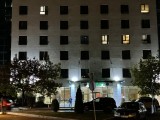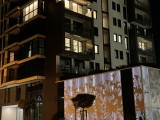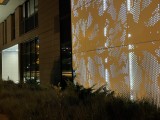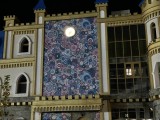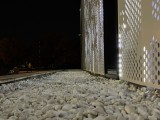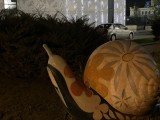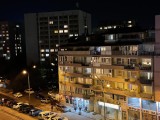Apple iPhone 12 Pro review

Triple camera, ProRAW support and Portrait Night Mode
The Apple iPhone 12 Pro packs a similar camera setup to the iPhone 11 Pro. There are three 12MP snappers on the back and one 12MP selfie at the front. The LiDAR scanner assists the autofocus and helps take portraits with realistic defocused background. The SL 3D scanner for Face ID assists the Portrait mode in selfies, too.

The primary camera has a 12MP sensor with 1.4µm large pixels and a 26mm wide lens. The aperture is now brighter at f/1.6 vs. f/1.8 on the iPhone 11 Pro. Optical image stabilization is available, as well as dual pixel autofocus.
The second camera is also a 12MP imager with smaller 1.0µm pixels and 13mm f/2.4 lens for ultrawide photos. The focus is fixed, and there is no OIS.
Finally, there is a third 12MP camera with 1.0µm pixels and 52mm f/2.0 lens for 2x optical zoom. This one offers OIS and supports PDAF.
The selfie camera uses a 12MP sensor with 1.0µm pixels and a 23mm f/2.2 lens. The focus is once again fixed. When using portrait mode on this camera, it captures depth info with the structured-light 3D scanner, so should be taking some impressive selfies portraits.

All four snappers support up to 4K@60fps video capturing with Cinematic Stabilization (EIS, EIS+OIS) and Expanded Dynamic Range. Dolby Vision HDR capturing is possible on all cameras at all framerates.
Camera app and features
The viewfinder is mostly unchanged since iOS 13 and iPhone 11 - you can see outside of the viewfinder thanks to the precise calibration of the two cameras that allows seeing what will be left outside the frame in real-time. This really makes for a more immersive camera experience, and if Photo/Video Capture Outside the Frame is enabled, then you can later expand your footage from the Photos app if something important was cut.
The new Apple image processing that's possible thanks to the new A14 chip includes Smart HDR 3, Night Mode on the main and ultra-wide camera, and Deep Fusion.

The Smart HDR 3 name speaks for itself - it's an improved HDR processing algorithm used in scenes with challenging light conditions.
The Night Mode icon pops up automatically when a low-light occasion presents itself, and it will take a pseudo-long-exposure shot, handheld of course. You will see the seconds suggested next to the Night Mode icon, but you can change the exposure time or altogether disable it with a tap. Usually, the phone picks exposure times of 1 or 2 seconds, but sometimes it will allow you to go for up to 30 seconds depending on the available light. You can use this mode on all cameras but the telephoto. The Night Mode Portraits, exclusive to iPhone 12 Pro, are shot with the main camera.
Deep Fusion is used when light conditions aren't ideal, say, indoors. It triggers instead of Smart HDR and Night Mode. Deep Fusion uses four frames before you hit the shutter, four more once you do, and one long exposure shot. The 16-core Neural engine will select the best frames and create a high-quality HDR photo that is very detailed, sharp, and natural-looking. The Neural processor's machine learning process analyzes the image being taken and processes them differently depending on what's in the frame - say, sky, foliage, or skin tones. Meanwhile, structure and color tones are based on ratios obtained by the Neural unit on the A14 CPU.
As usual, all cameras talk to each other, so they already know the correct exposure and tone mapping settings when you switch between them. This applies for both stills and videos.
The camera interface is mostly unchanged. You swipe between modes and have a couple of settings you can uncover with an upward swipe - flash, night mode, live photo, photo aspect, exposure compensation, and filters. In video mode, you can change the resolution and frame rate straight from the viewfinder.
Portrait mode is available on the main and the selfie cameras. Night Mode Portraits are shot on the main camera.
The iPhone 12 Pro will support shooting in ProRAW format, but this will be added via a firmware update later on.
Photo quality
The main camera saves good-looking 12MP photos with low noise levels, balanced sharpness, always accurate white balance, and colors, and the contrast is pretty high. The dynamic range isn't jaw-dropping, but we'd say Apple's hit the sweet spot with its latest Smart HDR and the photos look natural and well balanced.
The images are not ideal, though - high-frequency detail such as grass or foliage is not rendered in the best way we've seen from a flagship device. Various objects like grass, bushes, window blinds, distant people, car plates, etc. present a challenge for the camera and often come out smeared or deformed.
The 12 Pro uses the same sensor as the iPhone 12, 11, and 11 Pro, and that's why its output is not much different from theirs. The lens here comes with a brighter F/1.6 aperture, but we will test its benefits in the low-light section.
The 12MP ultrawide photos are among the widest we've captured with a phone, and we are quite impressed with what we can fit in just one photo. There is distortion correction, and it is done quite proficiently. You can turn that off if you prefer the wider field of view at the expense of some warping in the corners.
The detail in the photos is average, and the greenery becomes even more of a challenge for the processing here. Other than the unimpressive level of resolved details, the images come out with good contrast, white balance, and realistic colors. The noise is still kept reasonably low.
The 12MP telephoto output is excellent - there is plenty of resolved detail even if the grass is a hit or miss. Just like the main and ultrawide snappers, the telephoto images are very realistic-looking thanks to a combination of high contrast, accurate white balance and colors, and well-controlled HDR for a balanced dynamic range.
Apple's Night Mode triggers automatically in low-light scenes. You can't really opt-out of it unless you manually force it off each time it pops up. And there is no need! Sure, you can turn it off or correct the suggested exposure time, but we advise using it as is. It usually opts for 1s or 2s exposures, and the image is saved instantly, making it among the faster Night Modes right now.
As you will see from our camera samples, shot with Auto Night Mode, the low-light images from the primary camera are outstanding. The 12MP photos are sharp and detailed, the noise reduction is gentle, and yet the noise is low thanks to the powerful multi-stacking.
We can only praise the balanced exposure with mostly preserved highlights and natural shadows. The contrast doesn't go overboard, and the color saturation is kept natural and true to life.











Main cam Auto Night Mode, 12MP
Apple's automatic Night Mode will never turn the night into a day on its own, but it can very much do that if you tweak the exposure time manually. Not all takes will be keepers but remember - it's stacking multiple handheld photos.
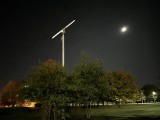
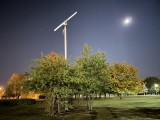
Night Mode OFF • Night Mode 10s
If you opt-out of the Night Mode when triggered automatically, the 12MP photos have lower sharpness and contrast, and a bit washed out colors. The noise becomes more visible, and the photo is a bit darker, and highlights may appear clipped. But even without Night Mode, the images do look good.
The ultrawide camera now offers Night Mode, and we live in times when this is one of the key selling points of the iPhone 12 series. Night mode triggers 99% of the time, and rightfully so. The 12MP ultrawide photos shot with Night Mode are usable - they have balanced exposure and restored highlights, offer more detail than the regular ones, and true-to-life color saturation. They are noisy and soft, sure, but very much usable, especially for compressed social networks or messengers sharing.









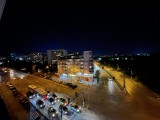
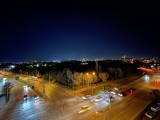
Ultrawide cam Auto Night Mode, 12MP
We can hardly recommend shooting ultrawide images at night. The detail is extremely low, the whole image is one big soft mess, the noise is too high, and the colors are often desaturated.




Ultrawide cam Night Mode OFF, 12MP
The 12MP tele camera sometimes works at night and that depends on the available light. If the luminance goes beyond some fixed point, the phone uses its primary camera and digitally zooms instead.
Night Mode isn't available on the tele camera. If you see the Night Mode icon appear on your viewfinder while shooting in 2X zoom, this means the phone has switched to the primary camera and will digitally zoom instead. The Night Mode pop-up on the telephoto camera is actually the tell of what's going to happen - digital or optical zoom.
The 12MP native 2x zoomed photos are noisy and the colors a bit desaturated. Still, they present higher than expected resolved detail, and the HDR successfully restores most of the highlights, and the output is very balanced.
We didn't really miss the Night Mode here, but why it's not present is still beyond us. Maybe it's slated to be the iPhone 12S' key feature, who knows!
There is only one hardware upgrade on the iPhone 12 Pro main camera since the 11 Pro/Max, and it's the brighter aperture. You can't really see the difference in broad daylight, but you can at night.
The normal images from the iPhone 12 Pro camera are brighter than the ones saved by the iPhone 11 Pro Max.
Then again, both phones default at Night Mode. And when Night Mode fires, both phones take equally good photos.




iPhone 11 Pro Max (Normal) • iPhone 12 Pro (Normal) • iPhone 11 Pro Max (Night) • iPhone 12 Pro (Night)




iPhone 11 Pro Max (Normal) • iPhone 12 Pro (Normal) • iPhone 11 Pro Max (Night) • iPhone 12 Pro (Night)




iPhone 11 Pro Max (Normal) • iPhone 12 Pro (Normal) • iPhone 11 Pro Max (Night) • iPhone 12 Pro (Night)
Both phones offer good photos, detailed with preserved colors, and overall balanced exposure. The brighter lens does make a difference on the iPhone 12 Pro in Normal shooting - a mode you will rarely use as Night Mode triggers more often than not. So, is the brighter lens enough to make you jump on the new model? We don't think so.
You can also look at our photo compare tool and see how the Apple iPhone 12 stands against other phones in the controlled environment of our test lab.



Apple iPhone 12 Pro vs. Apple iPhone XS and the Apple iPhone 11 Pro in our Photo compare tool
Reader comments
- Adeeb
- 22 Apr 2025
- 6p}
Iphone 12 pro ios update
- Tamim
- 17 Jan 2025
- 2Wx
12 pro
- WhytDehvull
- 15 Feb 2022
- 0ar
I completely disagree, but for me it’s just relative. I upgraded to a 12 Pro from an SE 2020. I’ve seen sitcom episodes that lasted longer than the battery in the SE, anemic would be a gratuitous compliment. So for me, the 12 Pro is a full season of...




















































